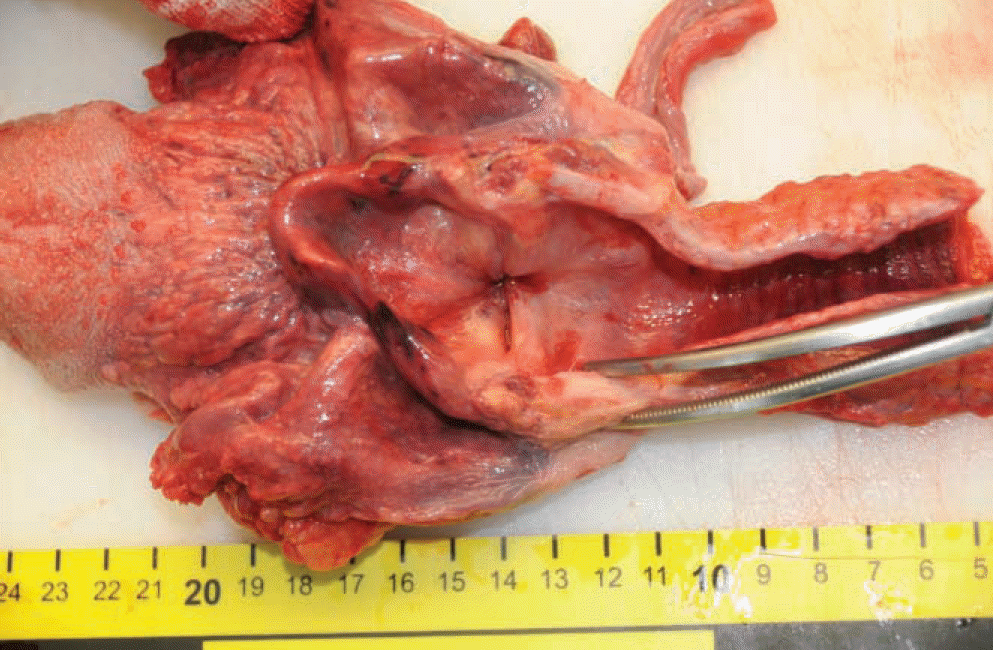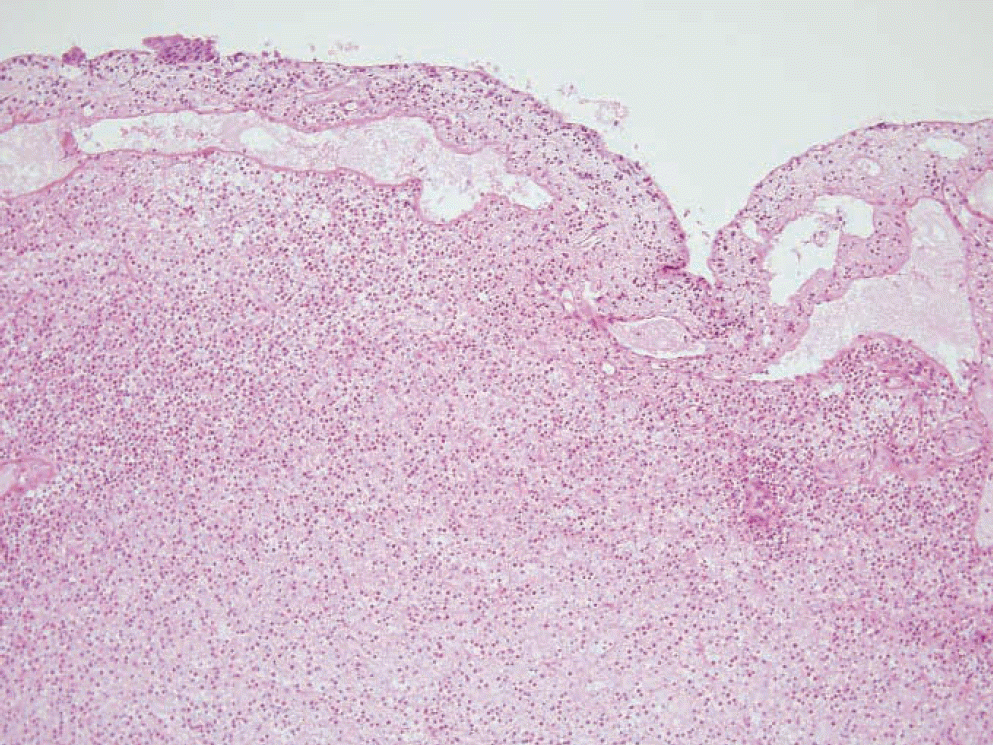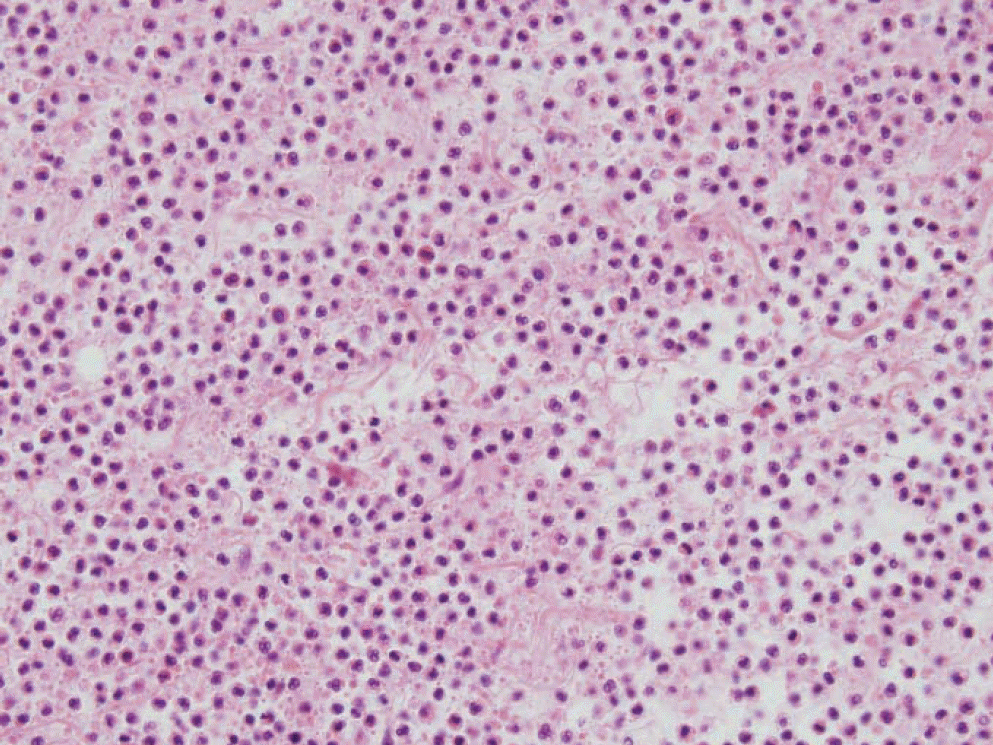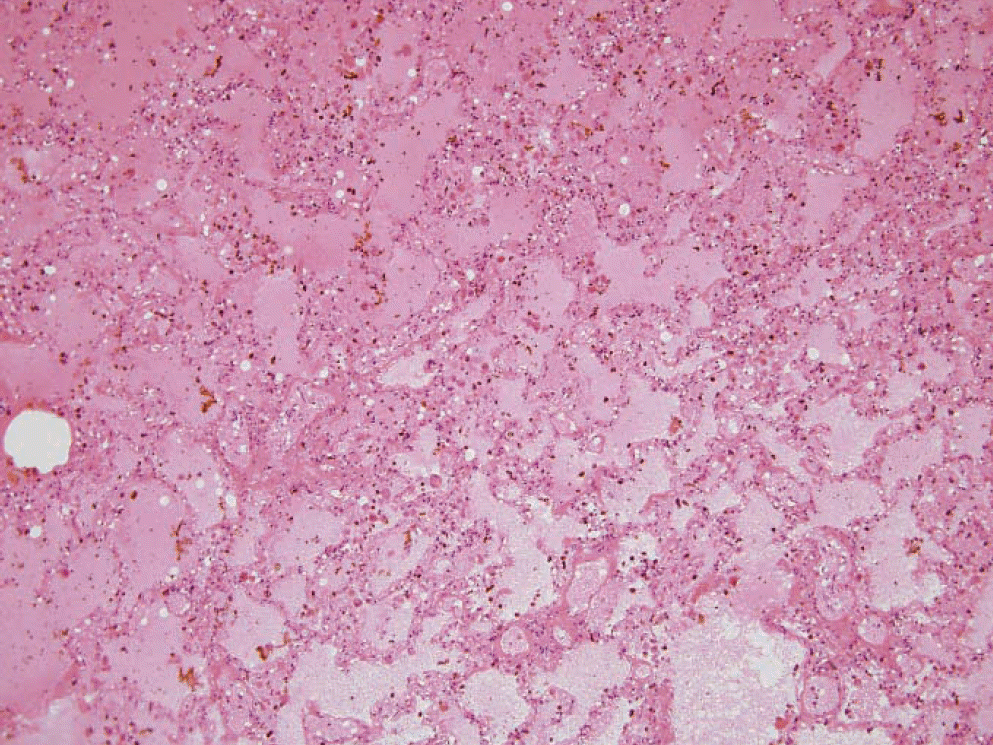Abstract
Sulfuric acid can cause local or systemic effects after exposure by inhalation, ingestion, or topical application. Direct ingestion is the main exposure route for fatal sulfuric acid injury. Fatal accidents involving the inhalation of toxic sulfuric acid vapors are rare. Inhalation of sulfuric acid fumes causes severe irritation or corrosive damage to the upper respiratory tract. Consequently, severe congestion, edema, and inflammation of the mucous membranes of the upper respiratory passages hinder the entry of air into the lungs, possibly leading to fatalities in victims. A 35-year-old man died at his home after complaining of a severe sore throat. One day earlier, he had worked in a sulfuric acid tank in a copper-smelting plant while wearing an ordinary gas mask that offered no protection against sulfurous acid vapors. Upon autopsy, the larynx and epiglottis showed pronounced edema, congestion, and inflammation that histologically mimicked an acute bacterial suppurative inflammation, accompanied by severe pul-2- monary edema. A field analysis of the air inside the sulfuric acid tank revealed SO4 positivity and a 40% sulfuric acid concentration.
REFERENCES
1. Sulphuric acid-Toxicological overview Health Protection Agency. Available at. http://www.hpa.org.uk/webc/HPAwebFile/HPAweb_C/1194947358719.
2. Yoon KW, Park MH, Park GS, et al. A clinical study on the upper gastrointestinal tract injury caused by corrosive agent. Korean J Gastrointest Endosc. 2001; 23:82–7.
3. Valent F, McGwin G Jr, Bovenzi M, et al. Fatal work-related inhalation of harmful substances in the United States. Chest. 2002; 121:969–75.

4. Serinken M, Karcioglu O, Evyapan F, et al. Bilateral pneumothorax following acute inhalation injury. Clin Toxicol (Phila). 2009; 47:595–7.

5. Benomran FA, Hassan AI, Masood SS. Accidental fatal inhalation of sulfuric acid fumes. J Forensic Leg Med. 2008; 15:56–8.

6. Kim JM. Hydrofloric acid poisoning: an autopsy case and Review of the Literature. In: Abstract Proceedings. Korea J Legal Med. 2013; 37:112.




 PDF
PDF ePub
ePub Citation
Citation Print
Print






 XML Download
XML Download